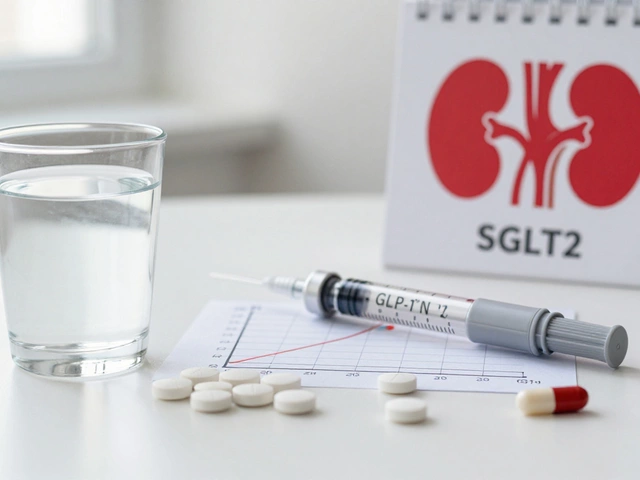Managing diabetes requires careful attention to medications, as some can negatively impact blood sugar levels. Understanding which drugs should be avoided is crucial for effective diabetes management. This article explores medications that might interfere with your diabetes plan and offers practical tips for safe drug choices. Learn how to navigate the complexities of drug interactions in diabetes.
Read MoreDiabetes Health Tips: Easy Steps for Better Blood Sugar
Living with diabetes doesn’t have to feel like a constant battle. The right habits can keep your blood sugar steady and your energy up without turning every meal into a math problem. Below are straightforward tips you can fit into a busy day.
Everyday Blood Sugar Basics
First, check your numbers regularly – not just when you feel off. Knowing the range that’s normal for you helps you spot patterns before they become problems. Aim for a consistent testing schedule, like before breakfast and after dinner, so you can compare results easily.
Next, focus on timing. Your body reacts to carbs differently depending on when you eat them. A balanced breakfast with protein and fiber slows the sugar spike that a sugary cereal would cause. Try a boiled egg with a slice of whole‑grain toast and a few berries instead.
Hydration matters too. Dehydration can concentrate blood sugar, making readings higher. Keep a water bottle handy and sip throughout the day. If you get bored, add a slice of cucumber or a splash of lemon for flavor.
Smart Food and Meal Ideas
When you shop, fill your cart with low‑glycemic foods. Think non‑starchy vegetables like spinach, broccoli, and peppers. They’re packed with nutrients and don’t send glucose crashing upward.
Complex carbs are your friend when paired with protein or healthy fats. A bowl of brown rice mixed with black beans, a drizzle of olive oil, and a handful of chopped veggies gives lasting energy and steadier blood sugar.
If you’re curious about popular diabetes meds, metformin remains the go‑to for many type 2 patients. It can help lower glucose production in the liver, but it works best alongside a solid diet plan. Talk to your doctor before making any changes.
Snacks don’t have to be a cheat. Keep a small stash of almonds, a piece of cheese, or a Greek‑yogurt cup. The protein and fat content keep cravings at bay and prevent late‑afternoon spikes.
Portion control is easier with a simple visual: fill half your plate with vegetables, a quarter with lean protein, and a quarter with whole grains or starchy veg. This “plate method” eliminates the need for a food scale while still balancing carbs.
Don’t ignore movement. A 30‑minute walk after meals can lower post‑prandial glucose by up to 20 %. If you can’t fit a full walk, try a brisk 10‑minute stroll after lunch and another after dinner.
Stress influences hormones that raise blood sugar. Find a quick stress‑relief habit – deep breathing, a few minutes of meditation, or even humming a favorite tune. Consistent practice helps keep cortisol levels down.
Sleep quality ties directly to glucose control. Aim for 7‑8 hours of uninterrupted sleep. If you struggle, establish a wind‑down routine: dim lights, no screens an hour before bed, and a short stretch session.
Finally, keep a diabetes journal. Jot down what you ate, your activity, stress levels, and blood sugar readings. Over weeks you’ll see clear links and can adjust your plan with confidence.
These tips aren’t a miracle cure, but they’re practical moves you can start today. Small changes add up, and soon you’ll notice steadier numbers, better mood, and more energy for the things you love.





